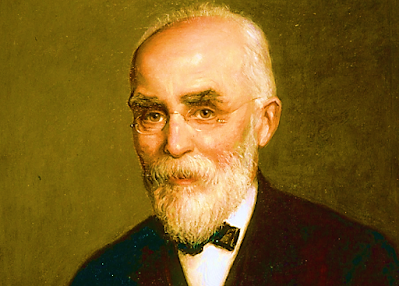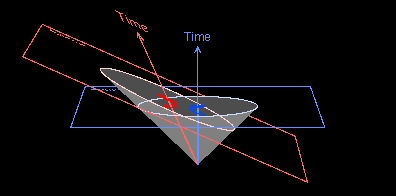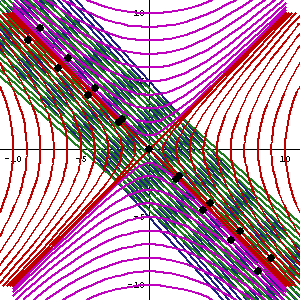Today (February 4, 1928) is the anniversary of Nobel laureate Hendrik Lorentz into the study of the effects of electromagnetic waves on radiation.

Hendrik Antoon Lorentz was born July 18, 1853, in Arnome, Aland, to a
relatively affluent Lorentz family. His father was Jared Frederick Laurents,
and his mother was Crete Ruida Lon Jingle. His mother disappeared when he was 4
years old. His father understood remarriage. Lorentz knew how to use the
science and math charts from the age of nine. In 1866-69 he attended the then
newly opened High School at Arunem. He excelled in science, history and
translation. In 1870 he joined the University of Leiden and studied physics and
mathematics. At the end of the following year, he joined here and graduated as a
research student for a doctorate. There he was greatly impressed by the
teaching method of Frederick Kaiser, who was a professor of astronomy. He also
became a physicist at his instigation. During these two years, he taught physics
and mathematics to high school students at Arunem.

The University of Leiden awarded him a doctorate in 1875 for his study
of theories for light reflection and light diffraction phenomena. Lorentz was
22 when he received his doctorate. His dissertations were intended to further
illustrate Maxwell's theory of electromagnetism, which at the time was
considered astonishing. The academic system of the Dutch University was
expanded in 1877. A department of theoretical physics was established at the
University of Leighton, with Lorentz, 24, as its first president. In 1881 Lorentz
married Aleta Cartarina Kaiser. They had two daughters and a son. For the next
20 years, his life depended on quiet personal study. He spent time interacting
with scientists around the world and reading occasional books on theories of
physics.


On January 25, 1878, his first discourse was on molecular physics. He
published an explanatory article on the relationship between the directional
speed of light and its density in a medium. In addition, he published several basic ideas about motion objects. In 1897, the German Physicists' Conference
was held in Dusseldorf. It was attended by scientists from many countries. Lorentz
became a leading scholar at the conference due to his eloquent speeches in
German, English, and French, and his personality. Although Lorentz specializes
in developing basic principles, he is also interested in recipe activities. In
1918 he served as chairman of the committee that monitored the effects of the
dam and maritime work (Netherlands) planned at the request of the Dutch
government.

For 20 years his study of electromagnetic theory has focused on the
interactions between electricity, magnetism, and light. His studies were in
mechanics, thermodynamics, thermodynamics, hydraulics, kinetics, and physics. Lorentz
became increasingly interested in electromagnetism, electron theory, and
analogy. He commented on the extension of time to explain the analogy between
the specifications of the analogy movements. Atoms are charged particles. Their
oscillations are set according to the light sources. This principle was
substantiated in 1896 by Fider Seaman. He is an alumnus of Lorentz. Seaman then
became his assistant.

Lorentz's Law, Lorentz Key, Lorentz's Distribution Lorentz Change are
manifestations of his study. Mathematical explanations such as length
reduction, length extension, and weight gain were used to better explain the
theory of analogy. Lorentz's fame was further enhanced by his methods, which
explained many of the doubts raised in the studies of 'Albert Michelson' and
'Edwin Mali' on the motion of electromagnetic waves through the medium of
ether. The guidelines for this were devised by George Pitt Gerald alone. The
two together later became known as the Lorentz Fitzgerald Summary. In 1920 he
was awarded the Nobel Prize for his research on the effects of magnetism on
radiation, as well as his alumnus Finder Siemen, who collaborated with him.

After receiving the Nobel Prize, he was awarded various honours and
prizes. Elected a member of the Royal Society in 1905. He was awarded the
Academy's Rambord Medal in 1908 and the Copley Medal in 1918. He published a
series of lectures on the principle of electrons at Columbia University in
1909. In 1912 Lorentz was appointed chairman of the first Calvey Conference in
Brussels. The conference was followed by an article by Poincar on physics,
which explained Lorentz's position. Lorentz retired in 1912. In 1912 Lorentz
was appointed Director of Research at the Taylors Museum in Arlem. He has been
a weekly lecturer at the University of Leighton. Paul Erenbestu, who worked
behind Lorentz at the University of Appeals, changed the name of the educational
institution for theoretical physics to the Lorentz Institute.

Lorentz spent most of his life teaching medicine and science. In his
later years, he regularly attended international scientific conferences and
engaged in scientific logic. Hendrik Lorentz, the winner of the Nobel Prize for his
study of the effects of electromagnetic waves on radiation, passed away on
February 4, 1928, at the age of 74 in Arulem, the Netherlands. His funeral on
February 10 was attended by many world leaders and eminent physicists. Ernest
Rutherford, President of the Royal Society, delivered the keynote address.
Aland stopped the telegraph and telephone service for 3 minutes in honour of the
famous scientist at 12 noon that day. Postage stamps were issued in his honour.
Source By: Wikipedia
Information: Dr. P. Ramesh, Assistant Professor of Physics, Nehru Memorial
College, Puthanampatti, Trichy.
Get information like this
https://t.me/joinchat/jpqj3jQLN51kYTk9
Join Telegram Group.
https://chat.whatsapp.com/FisIzCe4Br2CRgxAiicUnf
Join WhatsApp Group
Thanks.
Also, Read
🛑👍 CSIR-NET Physics Materials and Problems
🛑📕 21 GB and Hundreds of Physics E-Books Collection.
🛑🛥️ How does an Electric Motor work? (DC Motor).
🛑🤹♂️ Science Academies' Summer Research Fellowship Programme for Students and Teachers 2022.
🛑🔌 How does a Transformer work - Working Principle electrical engineering.
🛑🎙️ Transistors Explained - How transistors work.
🛑🔥⚡ How Thermocouples Work - basic working principle.
🛑🔌 Voltage Explained - What is Voltage? Basic electricity potential difference
🛑🔌 What is CURRENT– electric current explained, electricity basics.



.jpg)
No comments:
Post a Comment